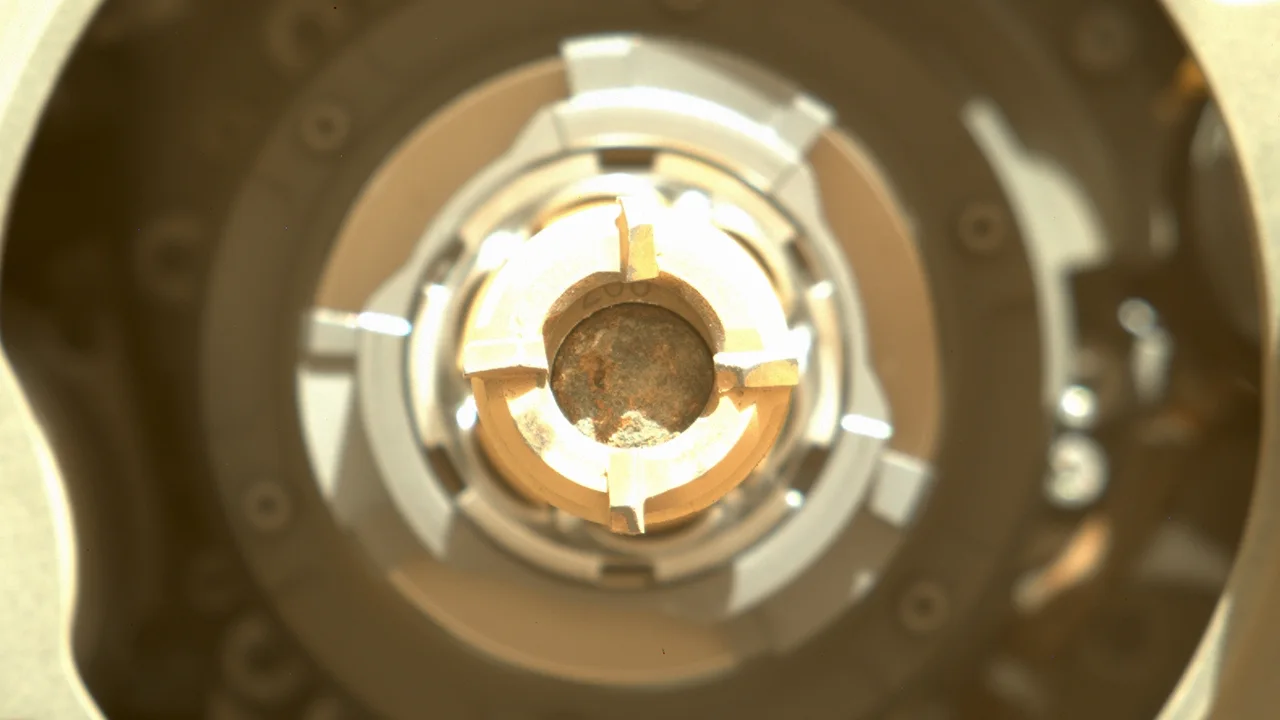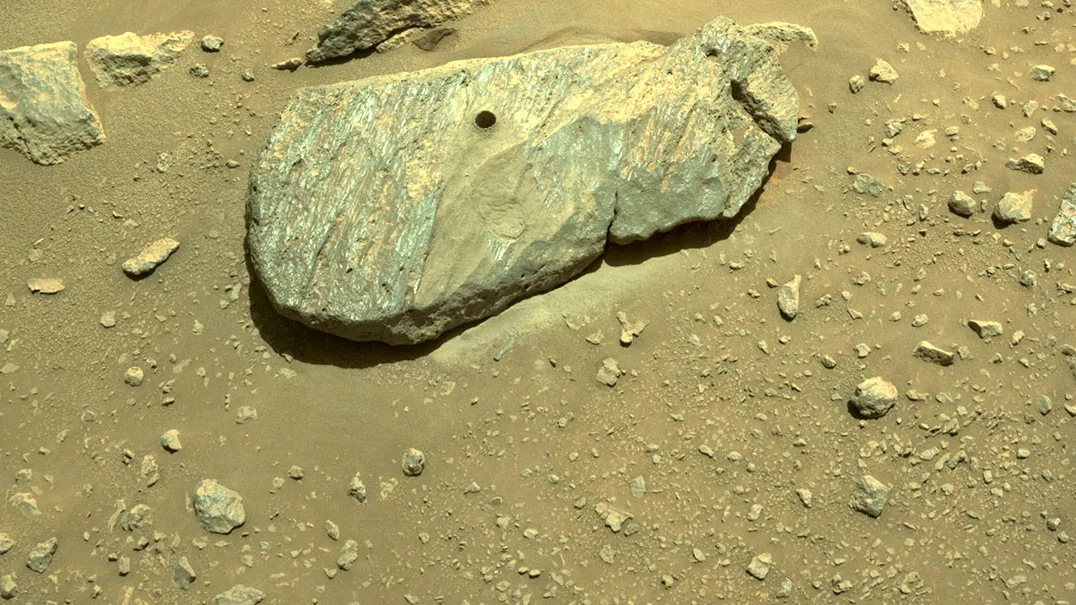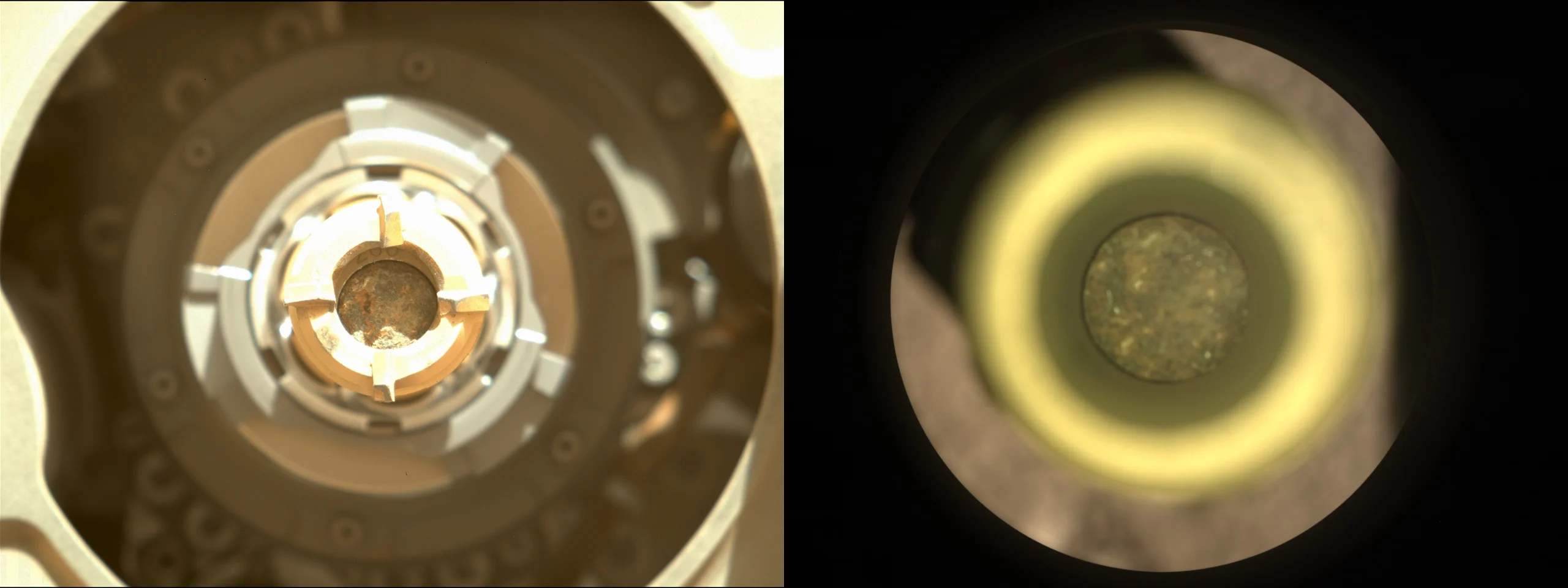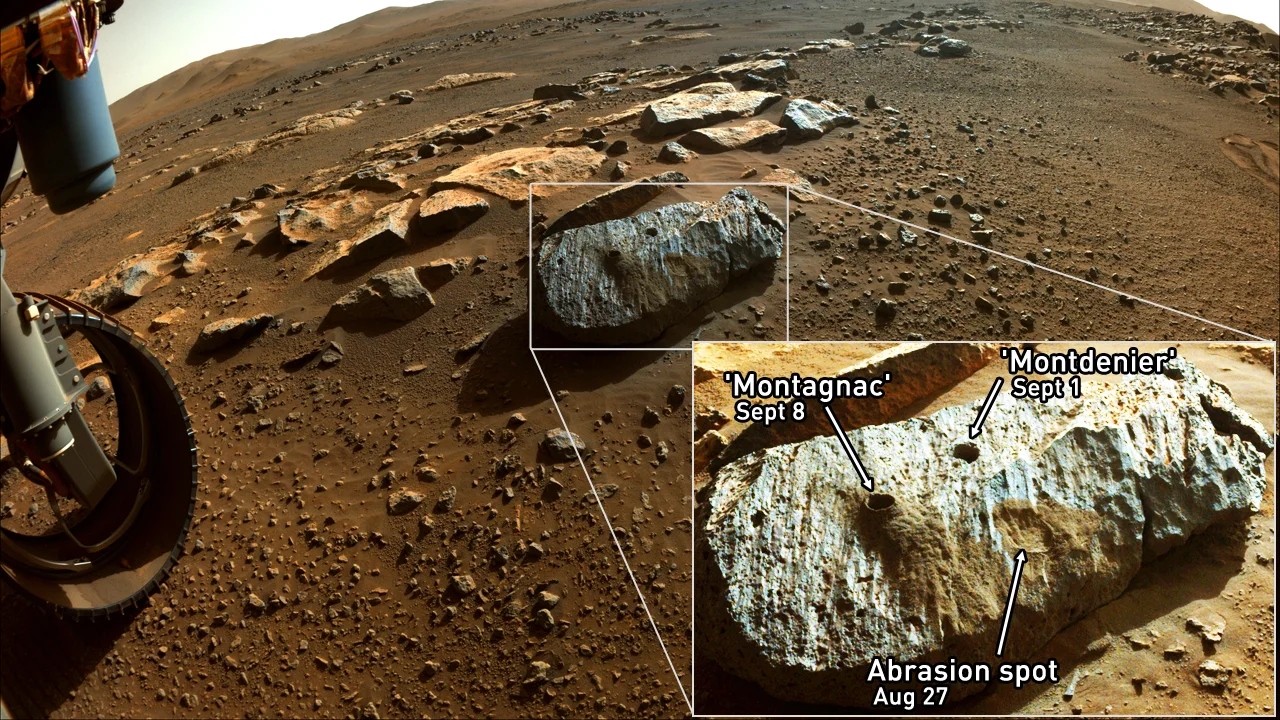
Perseverance's first Mars samples reveal potential habitability of Jezero crater
The volcanic rock the rover drilled into appears to have been exposed to liquid water for some time.
After the rover's initial unsuccessful attempt in August, Perseverance has now secured its very first Mars sample. The hope is that this piece of rock will be delivered into the hands of scientists back here on Earth within the next decade.
Editor's note: This story was first published on Tuesday, September 7. It has been updated with new information provided by the Perseverance team at NASA JPL.
The Mars 2020 mission is exploring Jezero Crater in search of signs that primitive life forms inhabited the lake that once filled the crater basin. As Perseverance and its drone helicopter companion, Ingenuity, pursue that goal, they have another vital task to perform. On board the rover are 38 titanium tubes intended to hold samples of the Martian environment — rock, dust, sand, or pretty much whatever sample the mission scientists find exciting and in need of further investigation.
The ultimate destination of these samples? The laboratories of planetary scientists here on Earth.
On August 6, nearly six months after the rover touched down in Jezero Crater, it attempted to take its very first sample. Unfortunately, the attempt failed. According to the mission team, the rock they drilled into was more fragile than expected. As a result, the sample merely crumbled away before it could be transferred to a sample tube.
On September 1, the team tried again, this time drilling into a briefcase-sized stone nicknamed 'Rochette'.

This composite of two images taken by the rover's Navcam shows the hole drilled by Perseverance during its successful sample-collection attempt. Credit: NASA/JPL-Caltech
This time, the pencil-sized sample held up as expected, and it was successfully transferred from the drill to the sample tube.

Left: The Rochette sample is shown, intact, inside the drill bit, courtesy of the rover's Mastcam-Z camera. Right: The sample inside its titanium tube, ready to be sealed, as imaged by CacheCam. Credit: NASA/JPL-Caltech
"For all of NASA science, this is truly a historic moment," Thomas Zurbuchen, the associate administrator for science at NASA Headquarters, said in a press release on Monday. "Just as the Apollo Moon missions demonstrated the enduring scientific value of returning samples from other worlds for analysis here on our planet, we will be doing the same with the samples Perseverance collects as part of our Mars Sample Return program. Using the most sophisticated science instruments on Earth, we expect jaw-dropping discoveries across a broad set of science areas, including exploration into the question of whether life once existed on Mars."
Perseverance is not equipped to send these samples home on its own, unfortunately.
It will be up to some future NASA mission, which will fly to Mars, land nearby, and collect all the samples taken by Perseverance. Then, it will load those samples onto a small rocket and launch them back towards Earth. By current estimates, these samples could arrive at Earth sometime in the early 2030s.
When they are finally delivered, scientists here will get their first look at pristine examples of Mars rocks and deposits. By directly examining these samples, rather than using a distant robot rover, they could add an immeasurable amount to what we already know about the Red Planet.
UPDATE: SAMPLES REVEAL POTENTIAL HABITABILITY
In an update from mission scientists at NASA's Jet Propulsion Laboratory on Friday, September 10, it was revealed that Perseverance collected not just one rock sample from Rochette, but two. The first sample, gathered on September 1, was nicknamed 'Montdenier'. The second, which was drilled on September 8, is named 'Montagnac'.

This image from one of the rover's hazcams shows the two holes drilled into the rock nicknamed "Rochette". The inset image, bottom right, enhances the brightness and contrast of Rochette to better show off its details. The hole on the right, nicknamed "Montdenier," was drilled on Sept. 1, with a sample secured away. The hole on the left, called "Montagnac," was drilled on Sept. 7, with a second sample secured by the rover. Below the holes is a round spot the rover abraded on Aug 27. Credit: NASA/JPL-Caltech
The analysis of the rock, so far, shows that it is most likely volcanic in origin. Also, close-up images of the rock revealed salt crystals, which would have been left behind either as water percolated through the rock or as water evaporated from the rock's surface.
This confirms that Jezero Crater was, indeed, a location where liquid water persisted for a long time on the surface.
According to NASA, "This groundwater could have been related to the lake that was once in Jezero, or it could have travelled through the rocks long after the lake had dried up. Though scientists still can't say whether any of the water that altered these rocks was present for tens of thousands or for millions of years, they feel more certain that it was there for long enough to make the area more welcoming to microscopic life in the past."
"It looks like our first rocks reveal a potentially habitable sustained environment," Ken Farley, a mission scientist at Caltech, said in a NASA press release. "It's a big deal that the water was there a long time."










